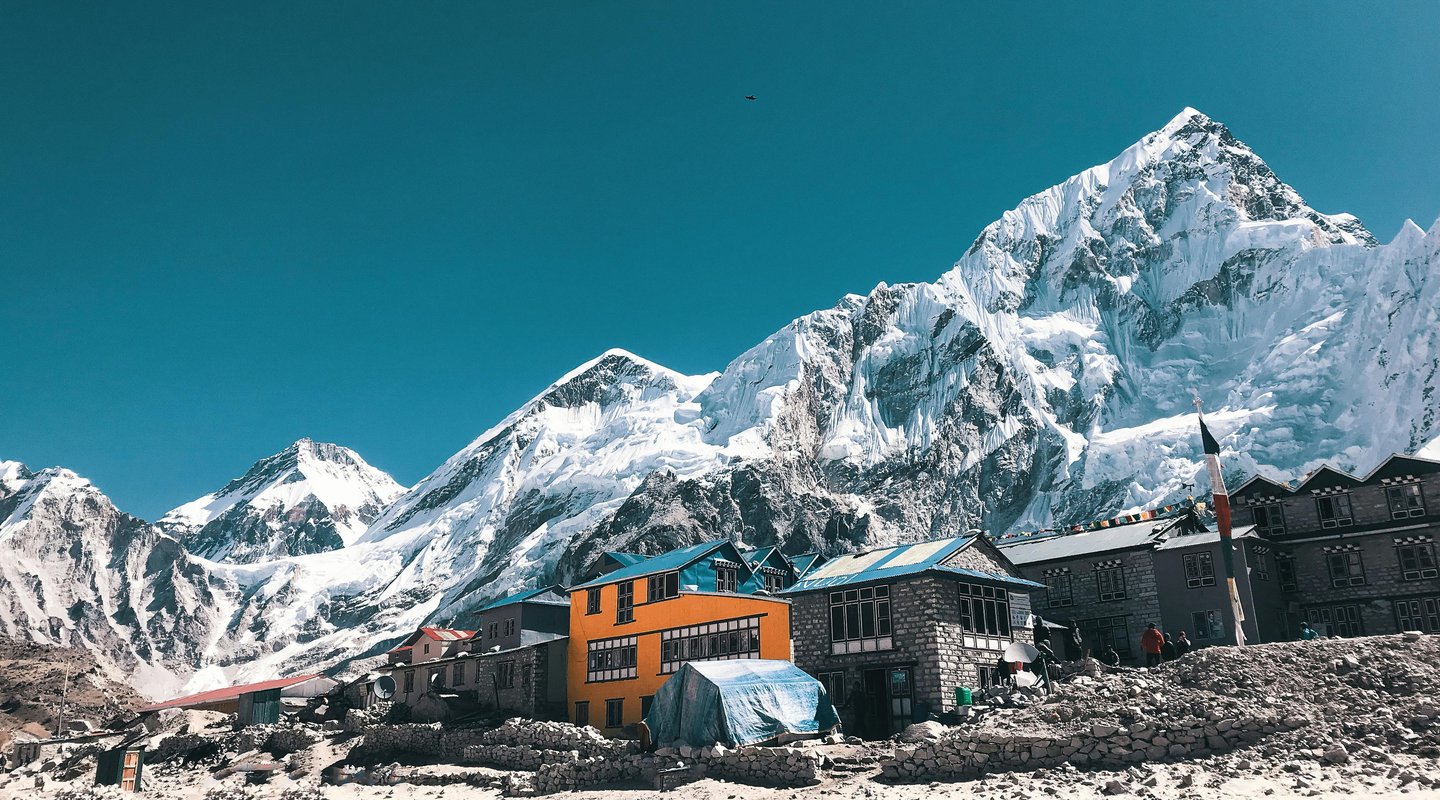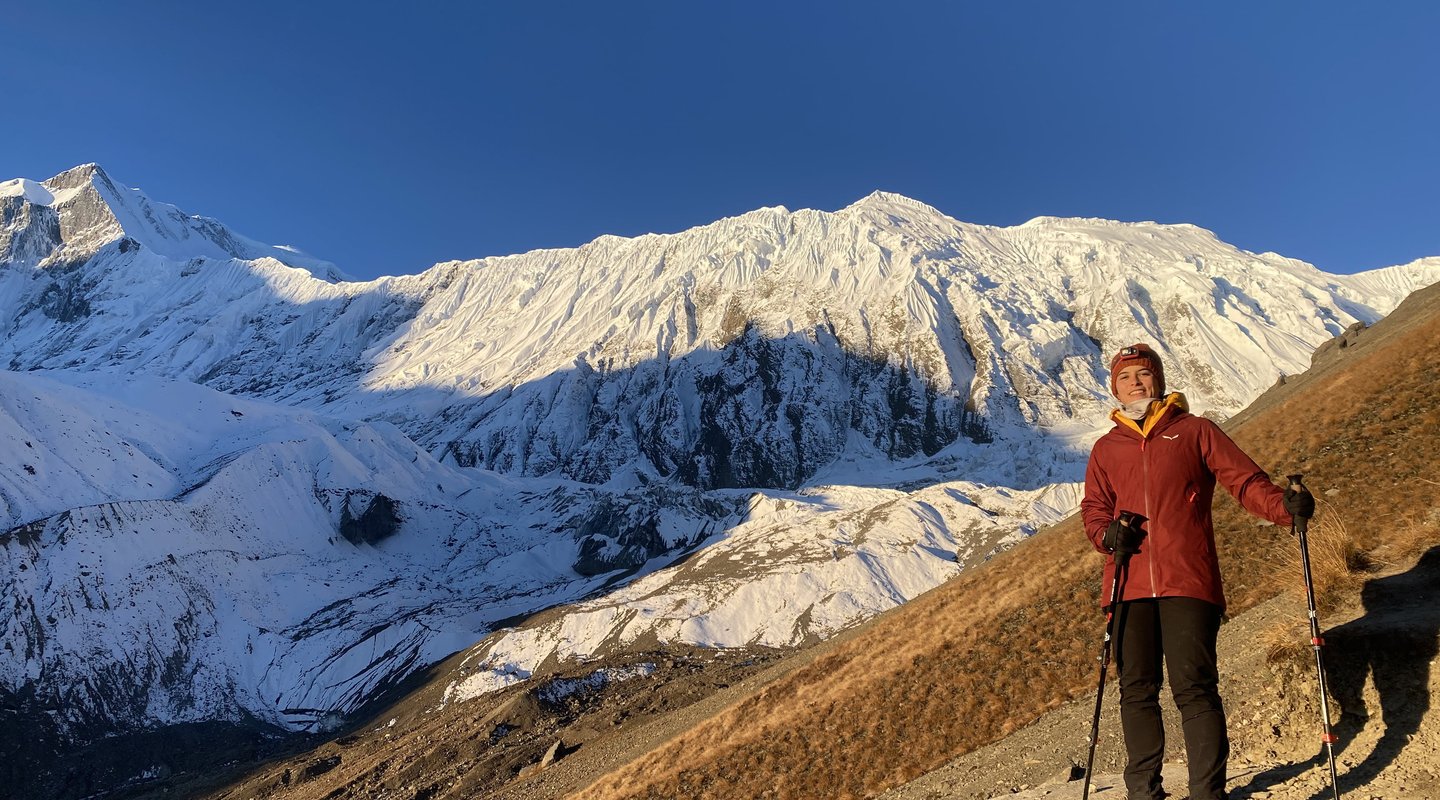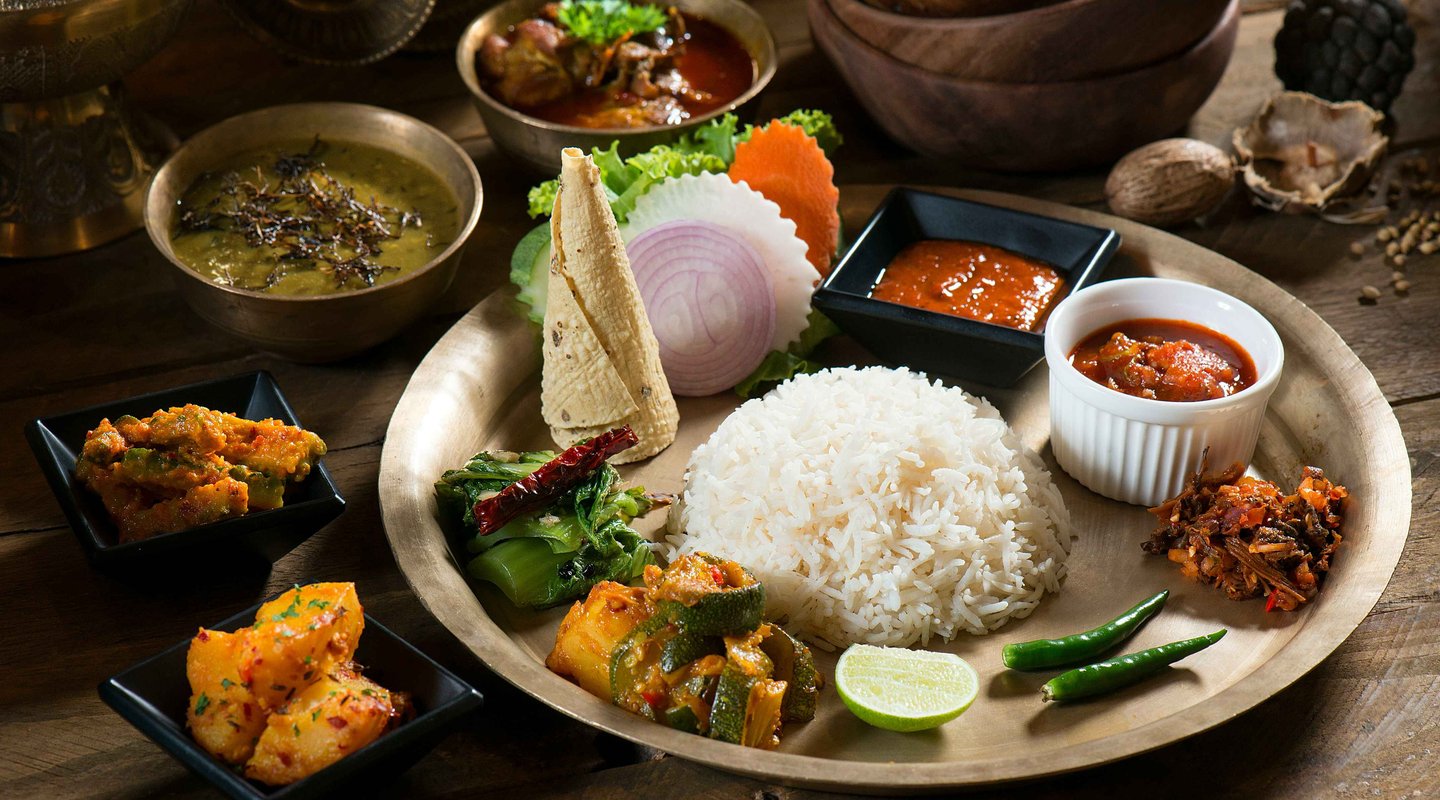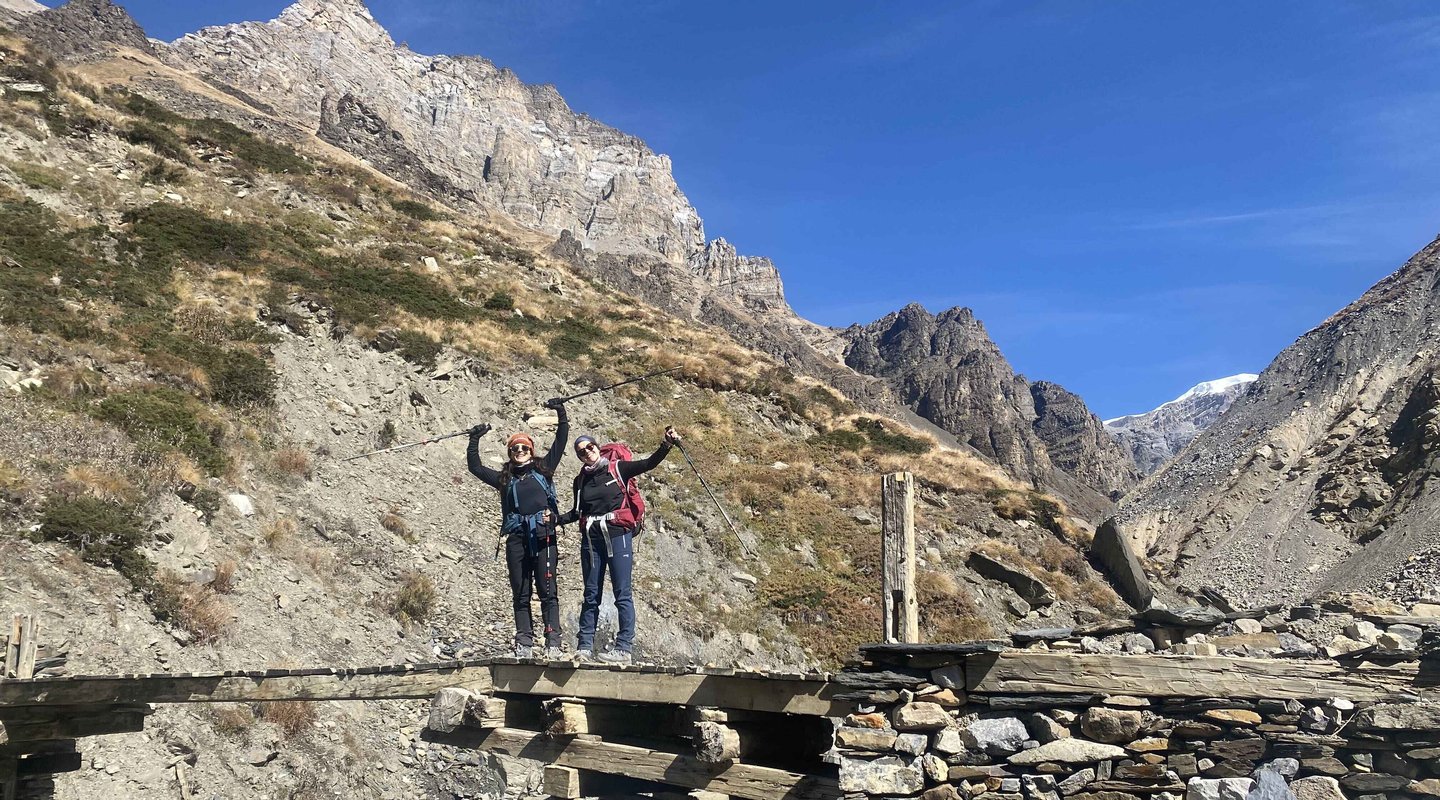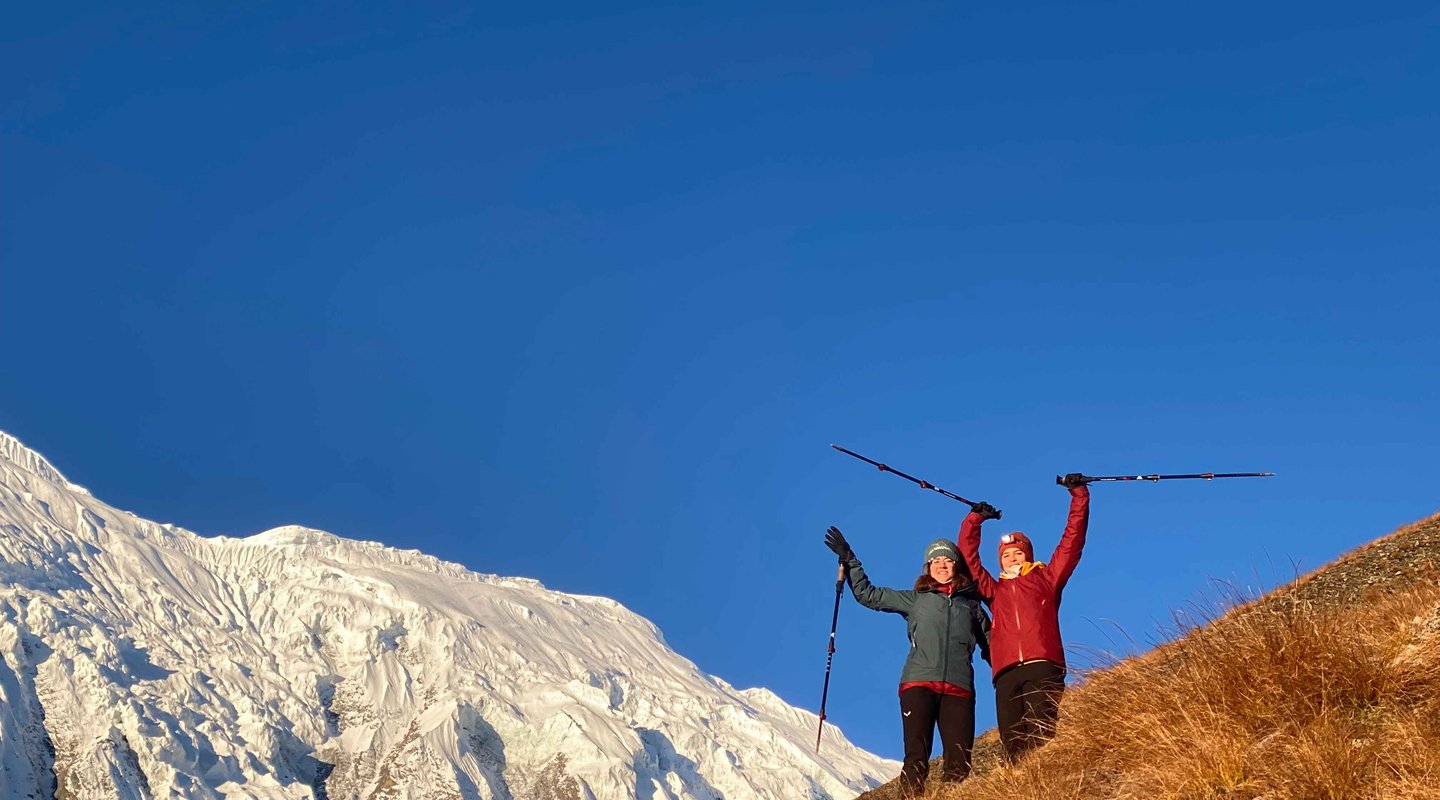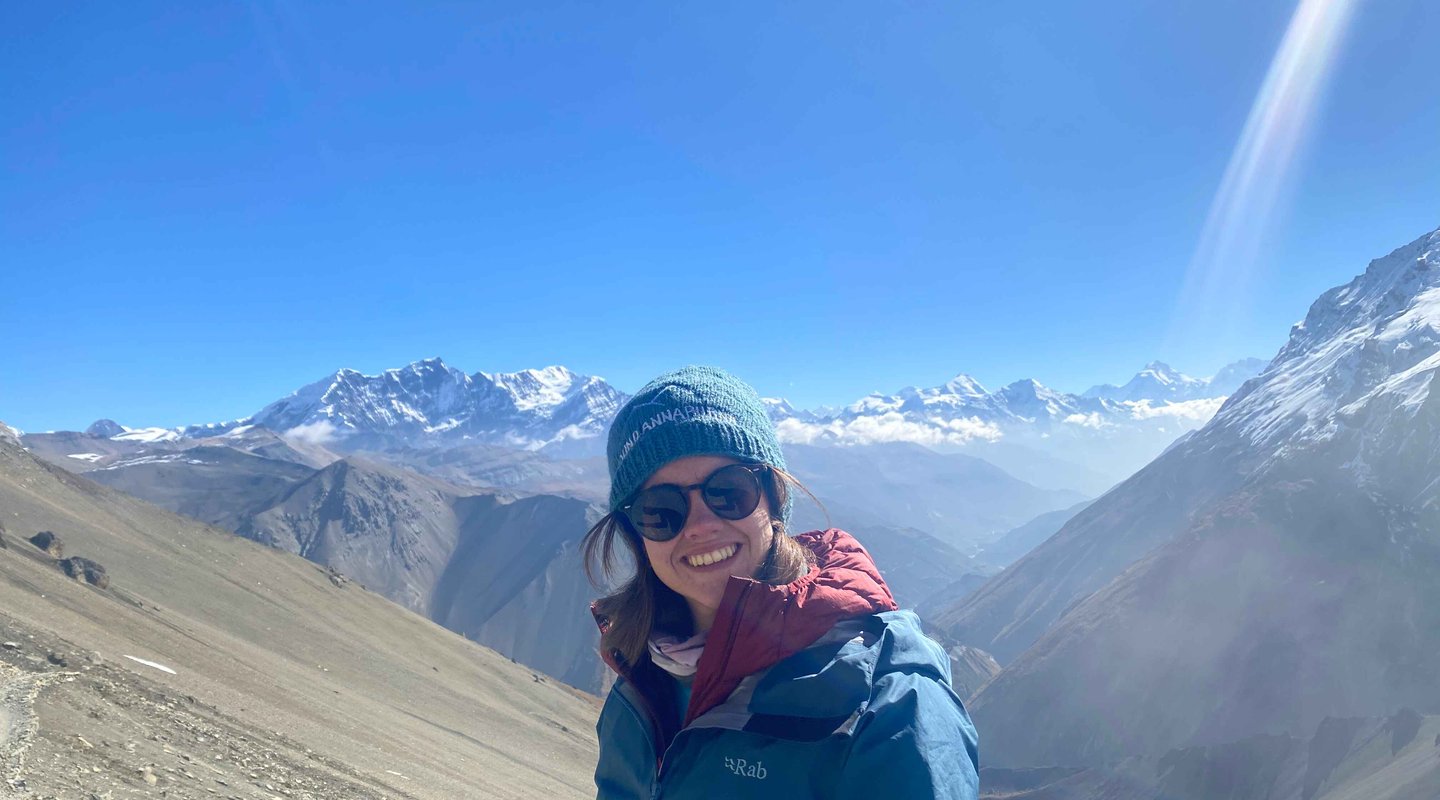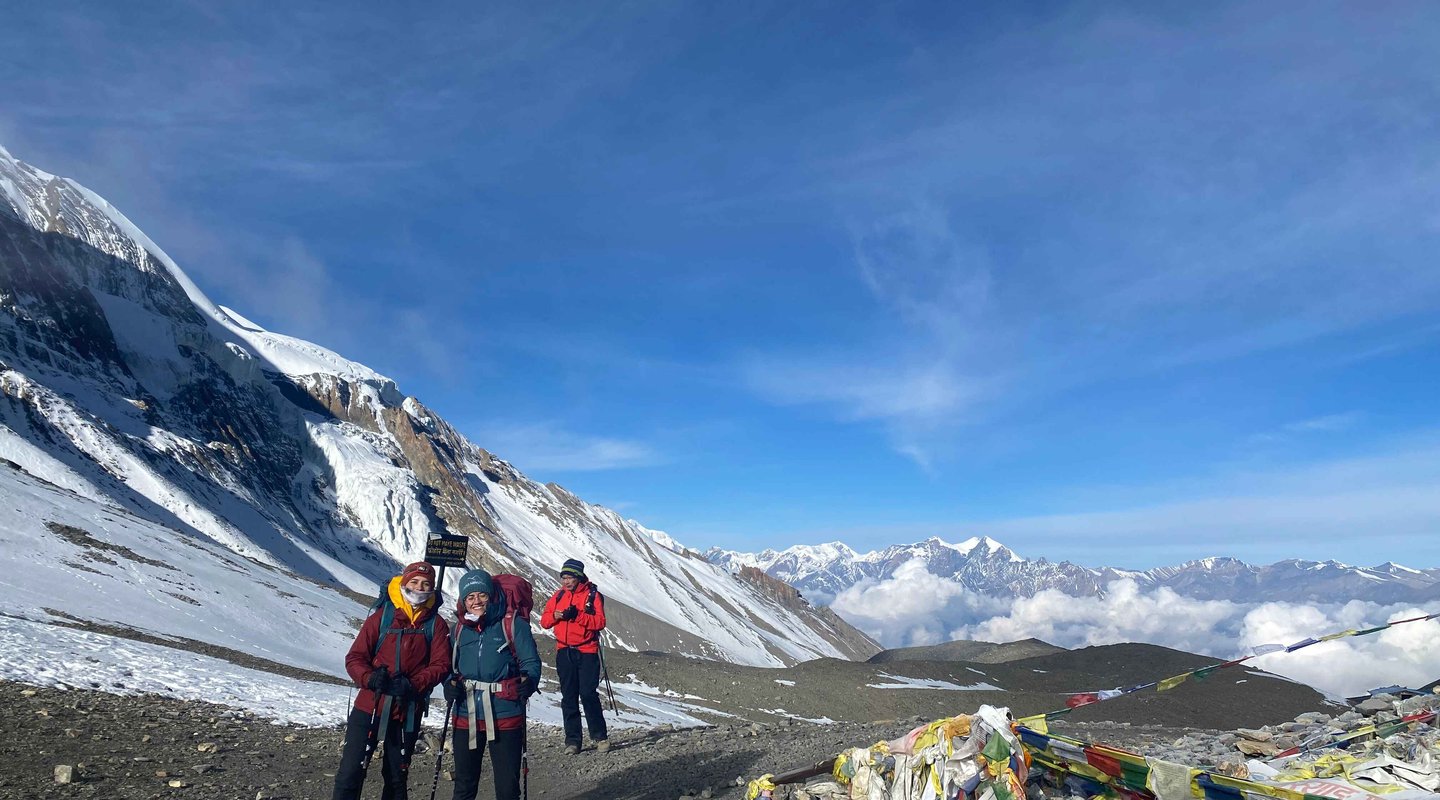Introduction
Have you ever wondered how a journey to one of the highest points on Earth could be both life-changing and financially manageable? Imagine trekking through rugged trails, where every step brings you closer to the legendary Everest Base Camp (EBC), all while keeping your expenses in check. What if you discovered that with proper planning, your dream trek could cost significantly less than you’d expect? In today’s data-driven guide, we break down every dollar—from permits and guides to flights and meals—so that even beginners can confidently budget for an unforgettable Himalayan adventure.
The Everest Base Camp trek cost typically ranges from $1,500 to $3,000 per person depending on factors such as travel style, season, and group size. With a systematic, step-by-step cost guide, Himalayan Hero Adventures is here to ensure you’re fully prepared for your expedition. Let’s dive into a comprehensive analysis of every cost element and provide practical tips to make your Everest Base Camp trek both affordable and memorable.
Understanding Everest Base Camp Trek and Its Cost Components
Before you embark on this epic journey, it’s crucial to understand what the Everest Base Camp trek entails—and, importantly, how the costs add up. The trek to Everest Base Camp isn’t just about the physical challenge; it’s also about smart budgeting and resource allocation.
What Is the Everest Base Camp Trek?
The Everest Base Camp trek is a world-renowned trekking route that takes adventurers through the heart of the Khumbu region in Nepal. You’ll traverse through quaint Sherpa villages, cross suspension bridges over roaring rivers, and gradually ascend to high-altitude landscapes where the majestic Mount Everest dominates the horizon. This trek offers not only breathtaking natural beauty but also a deep cultural experience as you encounter local traditions and lifestyles.
Key Cost Components
The overall cost of your trek can be broken down into several major components:
- Permits and Fees: Mandatory entry permits for Sagarmatha National Park and local municipality fees.
- Guide and Porter Services: Professional assistance to navigate the trails and carry your gear.
- Domestic Flights and Local Transportation: The essential flight from Kathmandu to Lukla and other local transfers.
- Accommodation and Meals: Teahouse stays along the trail and food expenses.
- Gear and Equipment: Necessary trekking gear, which can be rented or purchased.
- Miscellaneous Expenses: Travel insurance, personal items, incidentals, and contingency funds.
Why Cost Planning Is Essential for Everest Base Camp Trekking?
Proper cost planning is the backbone of any successful trek. Not only does it help prevent unexpected financial surprises, but it also allows you to make informed decisions on where to splurge and where to save.
Benefits of Detailed Cost Planning
- Financial Clarity: Knowing exactly where your money goes (permits, guides, flights, etc.) means fewer surprises along the way.
- Resource Allocation: By budgeting for each component, you can allocate funds appropriately and prioritize what’s most important—be it comfort, safety, or adventure.
- Enhanced Experience: With a well-planned budget, you can focus on the trek itself rather than worrying about running out of money.
- Cost Optimization: Research and comparison can lead to significant savings—group discounts, early booking offers, and local rentals can all reduce your overall expense.
Step-by-Step Cost Guide for Everest Base Camp
Here, we break down the cost of trekking to Everest Base Camp into clear, manageable steps with practical tips and examples to help beginners plan effectively.
Step 1: Permits and Fees
What You Need:
- Sagarmatha National Park Permit: Required for trekking within the national park. For foreigners, this typically costs around NPR 3,000 (approximately $25).
- Khumbu Pasang Lhamu Rural Municipality Permit: Usually about NPR 2,000 (around $17) per person.
Total Estimated Permit Cost:
Approximately $42 per person.
Practical Tips:
- Where to Buy: Permits can be obtained in Kathmandu at the Nepal Tourism Board or at the Monjo checkpoint upon entering the park.
- Documents Needed: A copy of your passport, passport-size photographs, and your trekking itinerary.
- Example: If you’re trekking with a group of four, each person needs to have these permits in place, so include this cost in your overall budget calculation.
Step 2: Guide and Porter Services
What You Need:
- Guide Fees: Generally range from $30 to $40 per day.
- Porter Fees: Typically between $20 to $30 per day.
Cost Calculation Example:
- For a 13-day trek (assuming 10 active trekking days):
- Guide Cost: $30/day × 10 days = $300 (up to $400 if opting for a higher rate).
- Porter Cost: $20/day × 10 days = $200 (up to $300 at a higher rate).
Total Estimated Cost for Guide and Porter:
Approximately $500 to $700 per person if you’re trekking solo; however, in a group, these costs are shared.
Practical Tips:
- Group Trekking: Sharing the cost of guides and porters can reduce individual expenses significantly.
- Hiring Locals: Hiring experienced local guides not only improves safety but enriches your cultural experience.
- Example: In a group of four, the guide and porter cost per person might drop by almost 50%.
Step 3: Domestic Flights and Local Transportation
What You Need:
- Kathmandu to Lukla Flight: The gateway to your trek. One-way flights typically cost between $180 and $200.
- Round-Trip Cost: Budget approximately $400 per person.
- Local Transfers: Additional transportation costs for transfers between airports and hotels in Kathmandu, usually around $20 to $40 total.
Practical Tips:
- Early Booking: Book your domestic flights well in advance to secure lower rates.
- Window Seat Advantage: Opt for a window seat to enjoy stunning aerial views of the Himalayas.
- Example: If your flight costs $190 one-way, plan for a round-trip expense of $380 and add $30 for local transfers.
Step 4: Accommodation and Meals
What You Need:
- Teahouse Accommodation: On average, costs range from $5 to $10 per night.
- Meals: Typically $5 to $7 per meal if not included in your package.
Cost Calculation Example:
- For a 13-day trek with 12 nights on the trail:
- Accommodation Cost: $5–$10 × 12 nights = $60 to $120.
- Meals: If not provided in your package, for three meals per day over 13 days:
- Low estimate: 3 meals × $5 × 13 days = $195.
- High estimate: 3 meals × $7 × 13 days = $273.
Total Estimated Cost for Accommodation and Meals:
Approximately $255 to $393 per person.
Practical Tips:
- Package Deals: Many trekking packages include meals and accommodation, so check what is already covered.
- Local Cuisine: Embrace local Nepali dishes such as dal bhat, which are both delicious and cost-effective.
- Example: Even if you opt for the cheapest teahouse option, budget for occasional upgrades or extras like hot showers.
Step 5: Gear and Equipment Costs
What You Need:
- Essential Gear: Trekking boots, clothing, sleeping bag, trekking poles, backpack, and headlamp.
- Options: You can either purchase these items or rent them in Kathmandu, particularly in the Thamel area.
Cost Estimates:
- Gear Rental: Typically ranges from $50 to $100 per person for a 13-day trek.
- Purchasing Gear: High-quality trekking gear might cost anywhere from $500 to $1,000 or more if you’re investing in long-term equipment.
Practical Tips:
- Renting vs. Buying: If you’re a beginner or trekking only once, renting gear is a cost-effective option.
- Local Rentals: Check reviews for local rental shops in Kathmandu to find competitive rates.
- Example: Renting your gear could save you $200 compared to purchasing new items, leaving you extra funds for other expenses.
Step 6: Miscellaneous and Contingency Expenses
What You Need:
- Travel Insurance: Essential for high-altitude trekking; typically costs between $100 and $150 per person.
- Incidentals: Snacks, Wi-Fi fees, laundry, and small personal items.
- Contingency Fund: Always allocate an extra 10–15% of your total budget for unforeseen expenses.
Cost Estimates:
- Miscellaneous Expenses: Approximately $50 to $70.
- Contingency: For a total estimated cost of $1,500, a 10% contingency would be an extra $150.
Practical Tips:
- Keep Cash on Hand: ATMs are scarce on the trail, so ensure you have enough local currency for daily expenses.
- Track Spending: Use a budgeting app on your smartphone (with offline capabilities) to monitor your expenses as you trek.
- Example: If unexpected weather causes flight delays, having a contingency fund will cover additional accommodation or transportation costs.
Everest Base Camp Trek Cost-Saving Tips
In addition to understanding the cost breakdown, here are some actionable tips to further manage and reduce your Everest Base Camp cost:
Research and Book in Advance
- Why: Booking flights, accommodations, and trekking packages in advance often results in lower prices.
- Tip: Use comparison websites and read reviews from trusted sources to secure the best deals.
- Example: Booking your domestic Lukla flight 3–4 months in advance can save you up to 10% on the ticket price.
Join a Group Trek
- Why: Sharing expenses with fellow trekkers significantly lowers individual costs for guides, porters, and even accommodation.
- Tip: Consider joining a group expedition organized by a reputable agency.
- Example: In a group of four, the cost for guide and porter services may drop by nearly 50% per person compared to trekking solo.
Opt for Local Rentals and Budget Accommodations
- Why: Renting gear in Kathmandu and choosing teahouse accommodations helps cut down costs without compromising on the trekking experience.
- Tip: Visit rental shops in Thamel, compare rates, and opt for budget-friendly options.
- Example: Renting a high-quality sleeping bag for $2 per day instead of buying one for $100 saves you significant upfront costs.
- Why: Overpacking increases the weight you carry, which may require hiring an extra porter, thereby raising your expenses.
- Tip: Make a detailed packing list and stick to essential items only.
- Example: Use lightweight, multi-functional clothing that can be layered to adapt to changing weather conditions, reducing the need for multiple bulky items.
Utilize a Detailed Budget Spreadsheet
- Why: Tracking your expenses before and during the trek ensures that you stay within your budget and can adjust for any unexpected costs.
- Tip: Use budgeting apps like Trail Wallet or a simple Excel spreadsheet to plan your spending.
- Example: Allocate separate columns for permits, guide fees, transportation, accommodations, meals, gear, and miscellaneous expenses, then update daily as you trek.
Negotiate and Ask for Discounts
- Why: Many local agencies and rental shops are open to negotiations, especially during off-peak seasons.
- Tip: Don’t hesitate to ask for discounts or group rates if you’re traveling with others.
- Example: If you’re trekking in a group, mention that you’re booking for multiple people—it might prompt the vendor to offer a better rate.
Purchase Travel Insurance
- Why: Although it might seem like an extra expense, travel insurance protects you from unforeseen events and can save you thousands in emergency costs.
- Tip: Choose a policy that specifically covers high-altitude trekking and potential helicopter evacuations.
- Example: An insurance policy costing $150 might cover a $1,000 helicopter rescue in case of an emergency.
Customizing Your Everest Base Camp trek Cost
Every trekker’s budget and requirements are different. Here’s how you can customize your Everest Base Camp cost to match your needs:
Determine Your Trekking Style
- Budget Trekker: If you’re looking to keep costs low, focus on essential expenses like basic permits, shared guide and porter services, teahouse accommodations, and local gear rentals.
- Mid-Range Trekker: Opt for slightly upgraded services—better accommodation, a more experienced guide, and occasional private transfers, while still being mindful of costs.
- Luxury Trekker: If comfort is a priority, consider packages that include premium teahouse stays, private guides, and additional amenities such as hot showers and gourmet meals. Keep in mind that these options will significantly raise your overall cost.
Consider the Season
- Peak Season (Spring and Autumn): Expect higher costs due to increased demand. However, the weather is typically more stable and scenic.
- Off-Peak Season (Summer and Winter): Prices may drop, but you might face challenges like heavy rain or extreme cold. Choose this option if you’re flexible and looking to save money.
Decide on Group Size
- Solo Travelers: Expect to pay full price for services. However, many agencies offer solo traveler discounts if you join a group trek.
- Group Travelers: Larger groups can share the costs of guides, porters, and accommodations, reducing the individual expense significantly.
Package Inclusions
- All-Inclusive Packages: These cover permits, accommodations, meals, guide and porter services, and sometimes even gear rentals and transportation. They offer convenience but come at a premium.
- Customizable Packages: Some agencies allow you to pick and choose what’s included, which might help tailor the cost to your specific needs.
Things you need to know about Everest Base Camp Trek
Beyond the basic cost breakdown, here are some unique topics that can further enhance your understanding and planning for the Everest Base Camp trek:
The Impact of Seasonality on Trek Costs
- Seasonal Variations: How costs fluctuate between peak and off-peak seasons, including flight availability and teahouse prices.
- Weather Considerations: The trade-off between lower costs in off-peak seasons versus the potential for harsher weather conditions.
Example:
During the autumn peak season (September to November), many trekkers report that while costs are higher, the clear skies and moderate temperatures justify the expense. Conversely, trekking in winter might save money but requires more robust gear and poses additional risks.
Group Versus Solo Trekking: Cost and Experience Analysis
- Cost Breakdown: A detailed comparison of individual costs when trekking solo versus in a group.
- Experience Factor: How trekking in a group can enhance safety and overall enjoyment while reducing costs.
Example:
A solo trek might cost you $2,000, whereas joining a group of four could reduce your individual cost to $1,500, thanks to shared guide and porter fees.
Local Versus International Trekking Packages
- Local Packages: Generally more budget-friendly and provide a more authentic experience.
- International Packages: Often come with additional services and amenities but at a higher cost.
Example:
Local trekking companies in Nepal may offer packages starting at $1,500, while international operators might charge up to $3,000 for similar itineraries with added luxuries.
Sustainable Trekking: How Eco-Friendly Practices Affect Costs
- Environmental Fees: Some packages include a small environmental fee that supports local conservation efforts.
- Sustainable Practices: How choosing eco-friendly options might slightly increase your cost but ensure the preservation of the Everest region for future generations.
Example:
An additional fee of $20–$30 per person might be included in some packages to support waste management and local community projects, which is a small price to pay for sustainable tourism.
The Role of Technology in Reducing Trek Costs
- Mobile Apps and Online Tools: How budgeting apps and online forums help trekkers track expenses and share cost-saving tips.
- Digital Payments: Increasing acceptance of mobile payments in Nepal, making transactions smoother and potentially reducing costs.
Example:
Using an offline budgeting app, such as Trail Wallet, can help you monitor daily expenses and adjust your spending in real time during the trek.
How to Achieve Success on Your Everest Base Camp Trek?
To wrap up, here are the actionable insights that will help you plan a successful, cost-effective Everest Base Camp trek:
Plan Meticulously:
- Create a detailed budget that includes all major cost components.
- Research and compare multiple trekking agencies to find the best value.
- Book flights, accommodations, and permits well in advance.
Embrace Group Trekking:
- Consider joining a group to share the costs of guides, porters, and other services.
- Use online forums and social media groups to connect with fellow trekkers.
Opt for Local Resources:
- Rent gear locally in Kathmandu to save money.
- Choose teahouse accommodations and local meals for a more authentic and affordable experience.
Prepare Physically and Mentally:
- Follow a training regimen to build endurance.
- Incorporate acclimatization days into your itinerary to minimize altitude sickness.
- Use technology, such as offline maps and budgeting apps, to stay organized.
Negotiate and Customize:
- Don’t hesitate to ask trekking agencies for customized packages that fit your budget.
- Use industry data and cost comparisons as leverage in your negotiations.
Invest in Insurance:
- Purchase comprehensive travel insurance that covers high-altitude trekking and emergency evacuations.
- Ensure that you have a contingency fund for unexpected expenses.
Stay Informed and Flexible:
- Keep abreast of the latest industry trends and reports, as costs and conditions can change.
- Be prepared to adjust your itinerary based on weather conditions and local advice.
Real-World Example:
One trekker shared that by joining a group of four, they reduced their individual guide and porter expenses by nearly 50%, ultimately saving over $150 per person. Such savings can be reinvested in better gear or used to extend your trip by an extra day, ensuring a more relaxed and enjoyable experience.
Conclusion
The Everest Base Camp Trek is a dream for many, but achieving it without breaking the bank is entirely possible with the right planning and budgeting. This comprehensive guide has provided you with a detailed, step-by-step cost breakdown—from permits and domestic flights to accommodations, meals, and gear—ensuring that even beginners can confidently plan their Everest Base Camp Trek journey. With estimates ranging from $1,400 to $3,000 per person, you now have the data-driven insights and actionable tips necessary to manage your expenses while still experiencing the awe-inspiring beauty of the Himalayas.
Remember, the key to success lies in meticulous planning, leveraging group discounts, and opting for local resources to reduce costs. Embrace the journey not just as an adventure, but as an opportunity to learn smart budgeting practices that will serve you well in future expeditions.
Ready to turn your Everest Base Camp trek dream into reality?
Contact Himalayan Hero Adventures today to get personalized advice, customized trekking packages, and expert guidance every step of the way. Whether you’re a solo adventurer or planning to join a group, our team is dedicated to helping you achieve success on the trail. Book your trek now and embark on a life-changing journey to the roof of the world!
